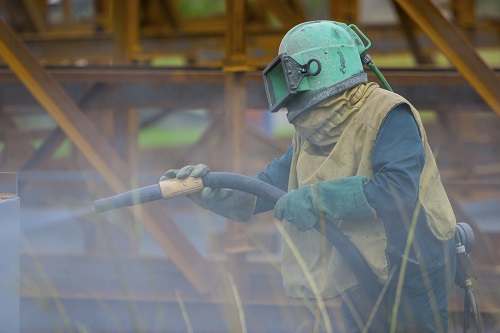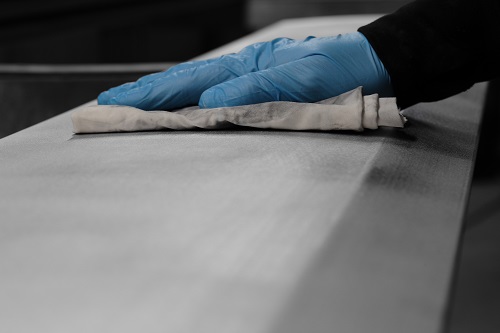5 Reasons You Should Consider Sandblasting
April 2, 2019

Sandblasting is a process by which granular abrasives are applied at high pressures to surfaces to remove rust, paint, corrosives, or other substances before treating them or applying a finish. When placed under high pressure and applied to the surface, the friction of the abrasive passing over the surface effectively scours and cleans it. The process is widely used in several industries and is a key component in surface preparation.
Though the name is drawn from the use of sand in the blasting process, many materials can be used in abrasive blasting surface preparation in New England. Even water can be utilized depending on the surface prep needs. Soft material, such as crushed walnut shells, can be used on softer surfaces, while the hardest finishes may require steel grit, sand, or glass beads. Regardless of the surface being prepared, professional surface preparation services can help determine the right material for your surface. Keep reading to learn more about the top five benefits of sandblasting for surface preparation.
Removes Contaminants
There are many potential contaminants that can come into contact with your components during or after the manufacturing process that can make application of coatings and finishes nearly impossible. One of the primary culprits is oil or grease. Even the slightest layer of oil on components can produce subpar, uneven finishes or prevent surface treatments from adhering. Another common surface contaminant that must be removed during refurbishing is old paint. Paint can be stubborn to remove, especially if it is present in multiple layers. While some oil, paint, and contaminants can be removed by chemical means, the process can be labor intensive and requires the storing of chemicals on-site. Sandblasting can offer an attractive alternative that is effective and efficient.
Removes Rust
If your industry is involved in refurbishing weathered components or surfaces, rust removal may be a primary concern. Because rust is the result of a chemical reaction involving oxygen and metal, it can be difficult to remove without damaging the surface. It can cause pitting and uneven surfaces which are nearly impossible to prepare without significant remediation. While it may take many man hours to remove rust using traditional abrasive techniques, sandblasting can quickly and effectively remove rust and restore metal surfaces to their preoxidized state. That leaves behind smooth, shining metal that is ready to be retreated.
Prepares the Surface
In addition to removing the paint, rust, and contaminants on the surface of metal and other materials, the process of sandblasting creates a surface that is prepped and ready to accept a new finish or coating. Abrasive blasting removes the thin outer layer of material on a surface, leaving a smooth, bare surface that is primed for applications. That means that, after sandblasting, your surfaces will readily accept any applications of paint, finishes, or coatings that you use.

Cost-Effective
Many surface preparation procedures can be costly or inconvenient for many industries. However, sandblasting is one of the most cost-effective, quick, and efficient means of preparing surfaces for painting or finishing. Manual surface prep of many materials can involve a burden of man hours spent using abrasive hand tools to remove paint and rust. Some surface preparations require the use of hazardous stripping or degreasing chemicals that cleanse surfaces but need time to work and space for storage. Sandblasting is a labor-saver that keeps your production lines moving and your projects on schedule.
Safe
Unlike some other surface preparation methods, sandblasting offers a safe, environmentally friendly alternative to chemicals. Many surface prep chemicals involve the use of acids and substances that are hazardous if they are inhaled or come in contact with skin and eyes. Sandblasting involves the use of organic elements, such as shell grit, metal, glass, sand, and water, to perform the same tasks in a way that is safer for the applicator and the environment.
If your surface prep needs aren’t adequately met by traditional methods, consider employing abrasive blasting surface preparation. It removes a range of contaminants and debris from surfaces, is safe for employees and the environment, and is cost-effective. For more information on sandblasting surface prep, contact Advanced Prep Coat, Inc.
Advanced Prep Coat, Inc.
41C Sutton Lane
Worcester, MA 01603
63 School Street
Putnam, CT 06260
800-230-2937
- Connecticut
- Maine
- Massachusetts
- New Hampshire
- New York
- Rhode Island
- Vermont
- and the entire Northeast
